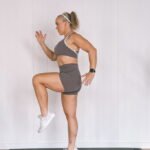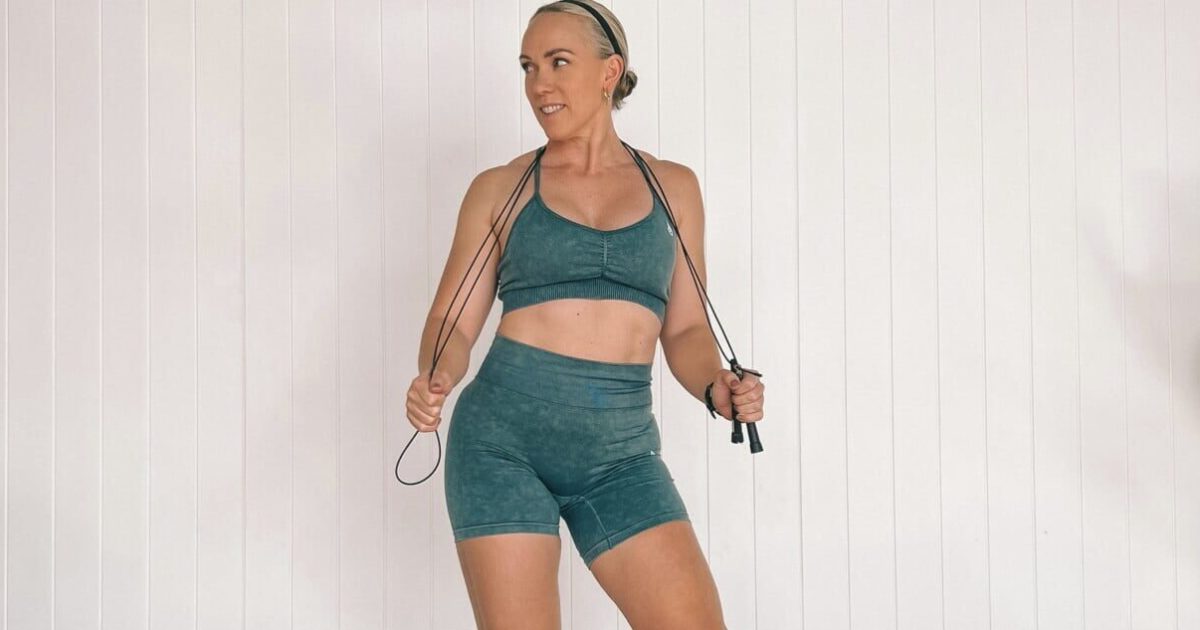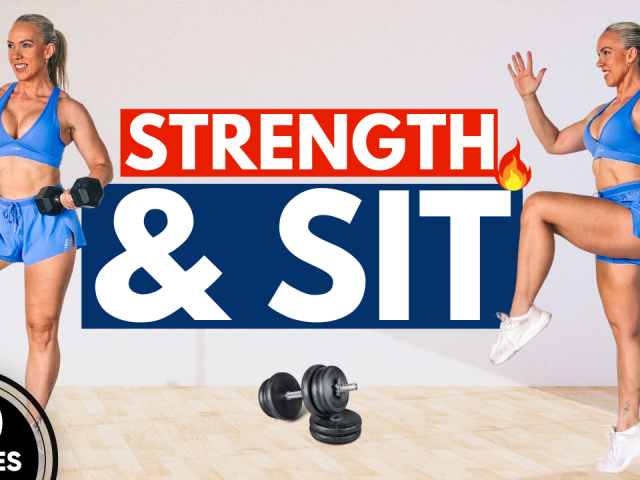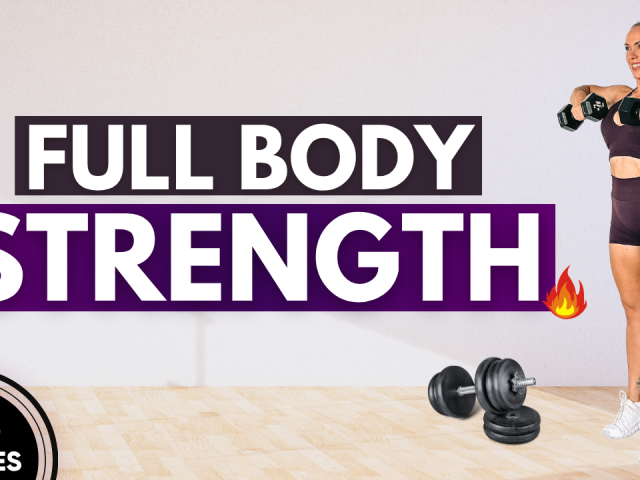
Weight loss after 40 can feel challenging. Metabolism slows down, responsibilities pile up, and finding effective, sustainable ways to shed unwanted weight can feel impossible.
But fear not, because there’s a game-changer in town: Zone 2 cardio. This isn’t just any training method—it’s a strategic approach that holds the key to effective weight management, particularly for those navigating the 40-plus journey.
While many swear by high-intensity interval training (HIIT) for its quick and intense workouts, Zone 2 training offers a different approach that doesn’t require pushing your body to extremes.
It’s like finding that sweet spot in your workout where magic happens. It’s a heart rate zone that’s not too fast or slow. It’s a pace, where you can comfortably chat but still break a good sweat.
While varying your workout intensities matters, embracing the benefits of Zone 2 Cardio can give your weight loss journey a significant boost, especially if you’re over 40 and looking to achieve your fitness goals!
Let’s dive into why Zone 2 cardio might just be the secret weapon you’ve been searching for on your weight loss journey.
The 5 Training Zones
Understanding the different heart rate zones is crucial to get the most out of your workout. There are 5 distinct training zones, each representing a specific range of heart rate percentages and using different fuel sources in your body.
From easier, fat-burning activities in Zone 1 & 2, to more intense, carbohydrate-driven workouts in Zone 5, these zones help tailor your exercise to achieve specific fitness goals. They guide you in optimizing your workouts for endurance, fat burning, or boosting anaerobic capacity, making your training more effective and goal-oriented.
It’s important to note that these zones may differ slightly depending on individual fitness levels. That’s why working with personalized heart rate zones is essential to get the most benefit out of your training.
Zone 1 – Active Recovery
Heart Rate Percentage: 50-60% of maximum heart rate
Fuel Source: Primarily fat
Exercise Example: Light jogging, walking, easy cycling
Zone 2 – Aerobic Endurance
Heart Rate Percentage: 60-70% of maximum heart rate
Fuel Source: Mostly fat with some carbohydrates
Exercise Example: Brisk Walking, cycling at a steady rate
Zone 3 – Tempo
Heart Rate Percentage: 70-80% of maximum heart rate
Fuel Source: Equal mix of fat and carbohydrates
Exercise Example: Moderate to faster-paced running, tempo cycling
Zone 4 – Threshold
Heart Rate Percentage: 80-90% of maximum heart rate
Fuel Source: Mostly carbohydrates
Exercise Example: Intense intervals, hill sprints, high-intensity training
Zone 5 – Anaerobic / Maximal Effort
Heart Rate Percentage: 90-100% of maximum heart rate
Fuel Source: Carbohydrates
Exercise Example: Sprinting, high-intensity intervals, maximal effort exercises
What is Zone 2 Cardio and Why Should I Do it?
Zone 2 cardio refers to exercising at a moderate intensity where your heart rate is around 60-70% of your maximum heart rate (MHR). It’s a comfortable pace allowing for conversation without feeling breathless.
In the world of heart rate zones, Zone 2 is where all the good stuff happens. It’s that zone where your body taps into fat as its primary fuel source, turning you into a fat-burning powerhouse.
But beyond weight loss, Zone 2 cardio offers a tonne of benefits for those of us over 40 looking to create a healthier lifestyle that’s sustainable and enjoyable.
Compared to high-intensity workouts, Zone 2 workouts are gentler and help manage stress levels. They offer effective calorie burn without overwhelming your body. Meaning, that they’re easier on your joints and won’t leave you feeling drained after every workout.
Another advantage of Zone 2 is its versatility. You can choose from various activities such as brisk walking, cycling, swimming, or dancing, making it easy to find a workout that suits your preferences and needs.
But the real beauty of Zone 2 is its staying power. It’s a pace you can keep up for longer periods, making it more likely for you to stick to your workout routine consistently. This consistency is key for sustainable weight loss.
Working Out Your Zone 2 Heart Rate:
Now, figuring out if you’re in Zone 2 can be done in a few ways:
Heart Rate Method: First, calculate your maximum heart rate (just subtract your age from 220). Then, aim to keep your heart rate between 60-70% of that number during exercise—that’s your Zone 2. Ideally, you’ll want to use a fitness tracker like a Fitbit or Apple watch to track this for you.
Maffetone Method: Another way is the Maffetone Method. Take 180 and subtract your age. That number gives you a rough estimate of your Zone 2 heart rate.
Talk Test: Here’s the easy one. If you’re working out and can hold a conversation without feeling like you’re panting mid-sentence, you’re likely in Zone 2. If it’s hard to talk, you might’ve gone past it.
Remember, the beauty of Zone 2 is that it’s not about going all-out. It’s that sweet spot where your body gets better at burning fat for fuel, improves your endurance, and doesn’t leave you feeling wiped out.
Whether you’re doing math with heart rates or just checking your ability to chat during exercise, staying in Zone 2 can level up your fitness game.
How Much Zone 2 Cardio Do You Need Each Week to Lose Weight?
The ideal amount of Zone 2 cardio for weight loss varies based on factors like fitness level, goals, and lifestyle. For effective weight loss, a general suggestion might be 150-300 minutes per week.
Aim for at least 150 minutes weekly, split across several sessions—around 30 minutes, five days a week is a good start. For increased calorie burn, targeting 300 minutes weekly can be more effective—around 60 minutes, five days a week or shorter sessions daily.
Consistency matters more than lengthy sessions. Regular Zone 2 workouts train your body to burn fat efficiently. Combining this with strength training or flexibility exercises can enhance weight loss and overall fitness.
Adjust duration and frequency based on your body’s response and energy levels. Listen to your body and avoid overexertion.
Remember, weight loss isn’t solely about exercise—balanced eating, adequate sleep, and stress management are vital too. Integrating these with Zone 2 cardio can lead to successful, sustainable weight loss.
Zone 2 Workout Examples
Brisk Walking or Hiking
Walking is my go-to for Zone 2 cardio. It’s easy on the joints, accessible for different fitness levels, and can be done anywhere. If walking on the flat feels a bit easy for you, then add in some hills or put your treadmill on an incline to increase the difficulty. Just make sure you’re maintaining a conversational pace for the entire duration.
Try 30-45 minutes of brisk walking or hiking on varied terrain 2-3 times per week.
Cycling
Cycling is a great way to explore nature while doing Zone 2 cardio. But when the weather doesn’t cooperate, indoor bikes are a perfect backup. They offer the same low-impact benefits, ensuring almost everyone can enjoy cycling for their workout, rain or shine.
Try 30-40 minutes of cycling at a steady pace, ensuring your heart rate stays within Zone 2.
Swimming Laps
Another great option for getting in a full-body workout that uses multiple muscles is swimming. The buoyancy of the water reduces joint strain, and its rhythmic motion encourages steady breathing, making it easier to sustain the Zone 2 heart rate.
Try 20-30 minutes of continuous laps at a moderate pace, focusing on consistent strokes and breathing.
For those of us navigating the challenges of weight loss after 40, zone 2 cardio offers us an effective approach without having to push ourselves to the extreme.
This moderate-intensity approach optimizes fat burning without undue strain, offering a sustainable and enjoyable path to fitness.
By choosing activities like walking, cycling, or swimming at a comfortable pace, you’re on track. Remember, keep it consistent and balance it with healthy eating, rest, and stress management for successful, long-term weight loss and better fitness.
Don’t forget to sign up to my YouTube channel so that you don’t miss any of my follow-along workouts. You can also sign up to my newsletter to stay up-to-date and receive free monthly workout calendars.




